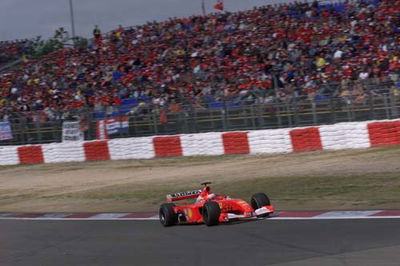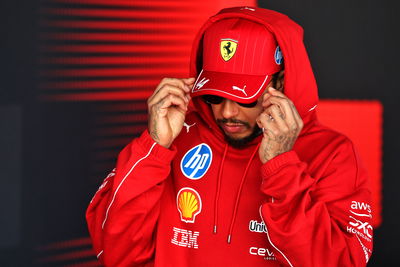Q&A: Carlo Cantoni - Barrichello's race engineer.
Rubens Barrichello's race engineer - Carlo Cantoni - was given the honour to collect the prize for the winning constructor at the French GP here he talks about that race, working with Barrichello and a lot more:
Q: Given the way things looked after qualifying on Saturday afternoon, it would have been hard to predict a third place for Rubens Barrichello, who had only qualified eighth. What changed in the course of just a few hours?

Rubens Barrichello's race engineer - Carlo Cantoni - was given the honour to collect the prize for the winning constructor at the French GP here he talks about that race, working with Barrichello and a lot more:
Q: Given the way things looked after qualifying on Saturday afternoon, it would have been hard to predict a third place for Rubens Barrichello, who had only qualified eighth. What changed in the course of just a few hours?
Carlo Cantoni: Right from Friday, we had a few problems in defining the set-up for Rubens' car. In qualifying we did not get the most out of it, but by the warm-up on Sunday morning, things changed radically. We made several changes, especially on the electronics side, working on brake balance and traction control. Rubens immediately got back on form and started to push even harder. Then, before the race, we made a few more small changes to the set-up and the electronics which allowed him to run a really aggressive race.
Q: You have been Rubens' race engineer for a year and a half now. How do the two of you get on?
CC: I would say it is very positive and productive. From a technical point of view, Rubens is very well prepared and sensitive. His driving style is very different to Schumacher's and as a consequence, the adjustments, the set-up and the electronic settings on his car are different, especially as he brakes with his right foot and his team-mate with the left. This means that some solutions which suit Michael are not suitable for Rubens.
Q: What was your career path to Ferrari?
CC: After I graduated in mechanical engineering at the Milan Polytechnic, I sent my cv to all the Formula 1 teams. I got no replies and ended up at Innocenti in Milan where I designed forging machinery. Three months later, I had the opportunity to go to Brembo, where I worked as a Formula 1 track engineer from 1992 to 1994. It was a time when all the teams used Brembo brakes. That's how I came into contact with Ferrari and I joined in 1995. My first role was as a chassis engineer with the test team and then I moved on to be a track engineer. In 1999, I switched to the race team as Mika Salo's race engineer. It was a great experience and I have good memories of the Finn.
Q: What does an engineer in your position do when he is not in his natural environment of the race track?
CC: Apart from being in the thick of it for the tests, my time in the office is spent analysing data from the track, in order to prepare for the next grand prix. I am in touch with the technical office and those who work on research and development to keep up to date with new solutions that are on their way and to understand how best they can be integrated into our work on the track. Also, when I am in the office, I have a very close relationship with the driver. Rubens likes to use computers and e-mail and so we are in constant contact, either written or verbal to discuss how preparations are coming along for the next race. It's like being in a continual briefing meeting.
Q: And at the grands prix?
CC: When we are at the races, our job is to coordinate all the group which works with the driver. It is made up of an engine specialist, a chassis specialist and all the mechanics. It is our job to link with the driver to download all his input.










